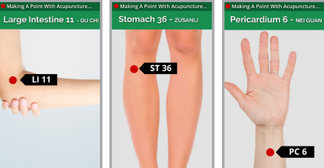Periods cramps are aggravating and for most women, they are a monthly ritual of the menstrual cycle. While mild period’s cramps are normal, severely painful periods are not. As much as 60% of reproductive-age women experience painful menstruation until menopause or they reach the age of 50.
In medical terms, painful periods are known as dysmenorrhea and are most experienced by adolescent girls in the first year or two when menses begins. The pain is often accompanied by symptoms like upset stomach, vomiting, headaches, and lethargy. But as they age, menstrual camps gradually fade away. However, many women suffer severe cramps during every menstrual cycle throughout their life.
In general, there are two types of dysmenorrhea – primary in which painful cramps begin soon after the first period and secondary that starts after several years of the first menstruation cycle.
Primary Dysmenorrhea
The most common type of menstrual cramps, primary dysmenorrhea is caused by prostaglandin, natural inflammatory chemicals present in the human body. Before the periods begin, the amount of prostaglandins increases while the level of progesterone (a hormone that prepares the uterus for pregnancy) decreases in the lining of the uterus. The levels of prostaglandins are typically high on the first day of menstruation.
The major role of prostaglandins is to contract uterine muscle. This decreases blood flow and increases pressure on the pelvic nerve. Ultimately, it results in severe pain in the lower abdominal area. As the lining of the uterus sheds during menstruation, the levels of prostaglandins decrease and eventually the pain subsides too.
Secondary Dysmenorrhea
Secondary Dysmenorrhea that develops after several years of first menstruation, is caused by medical conditions like infection, ovarian cysts, uterine fibroids, endometriosis, and premenstrual dysphoric disorder (PMDD). The pain often lasts for the entire duration of menses and gets worse with age. In most cases, women seek pain relief from doctors.
How to treat Dysmenorrhea?
In general, dysmenorrhea is treated with medications that are nonsteroidal anti-inflammatory drugs [NSAIDS]. However, taking a high amount of dose of NSAIDs throughout the menstrual life, put women at high risk of kidney damage. Also, these medications could cause liver, gastrointestinal pain, and nervous system toxicity. Additionally, there are hormonal medications, birth control pills, for instance, beneficial to get relief from menstrual cramps.
Surgery is also suggested to treat dysmenorrhea but not necessarily. However, some lifestyle changes like regular exercise and getting enough sleep help to reduce painful periods. Several relaxation techniques such as acupuncture are also beneficial to treat dysmenorrhea.
Pulsed Electromagnetic Fields, PEMFs for short, is majorly used therapy in the treatment of primary dysmenorrhea. The PEMFs treatment helps reducing prostaglandin levels as much as 62% and other menstrual symptoms within one hour of the therapy on the first day of menstruation.
PEMFs therapy helps to treat severe menstrual pain and other symptoms. Consider getting the treatment from licensed practitioners at NY Papa Acupuncture.



